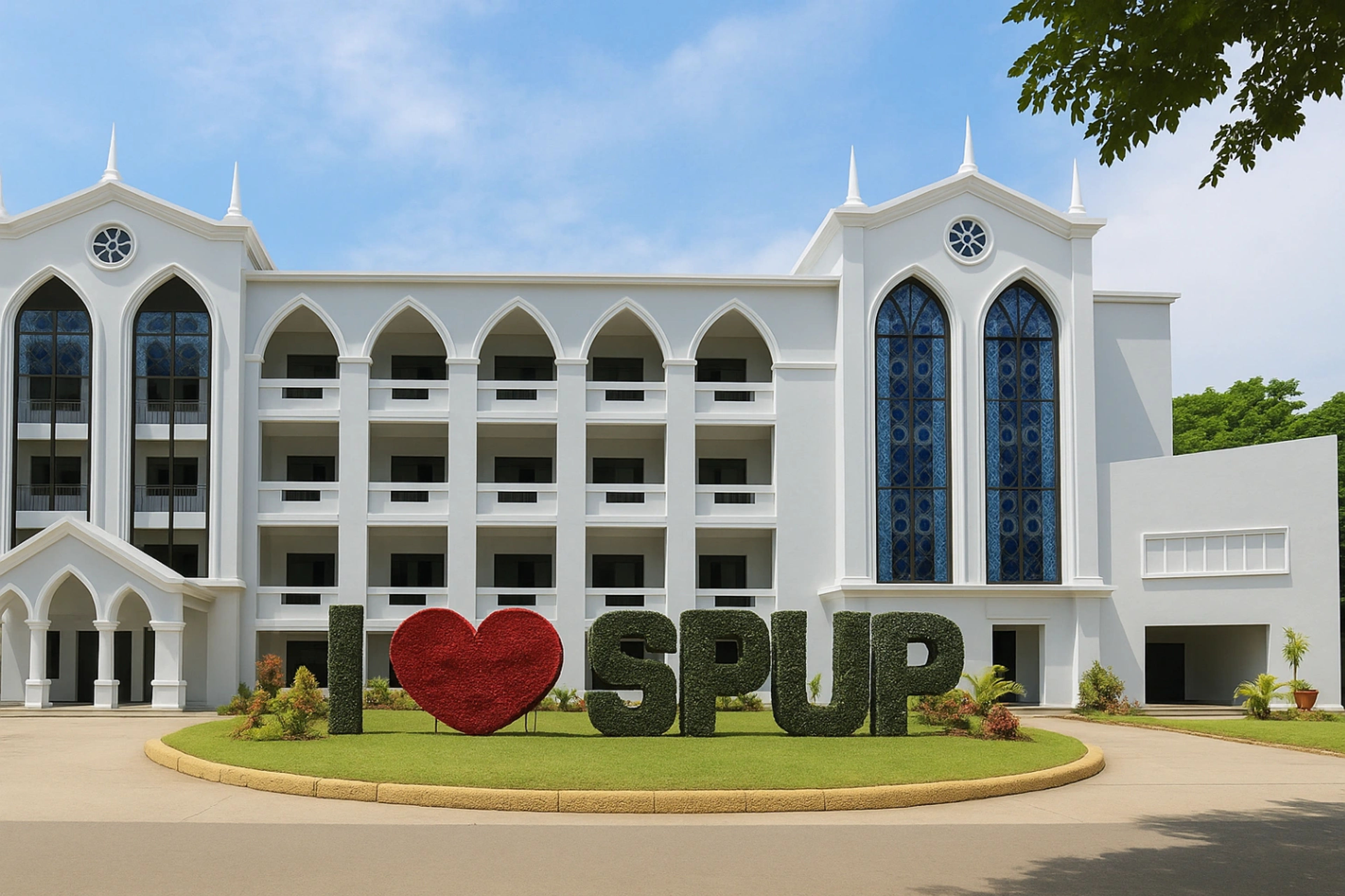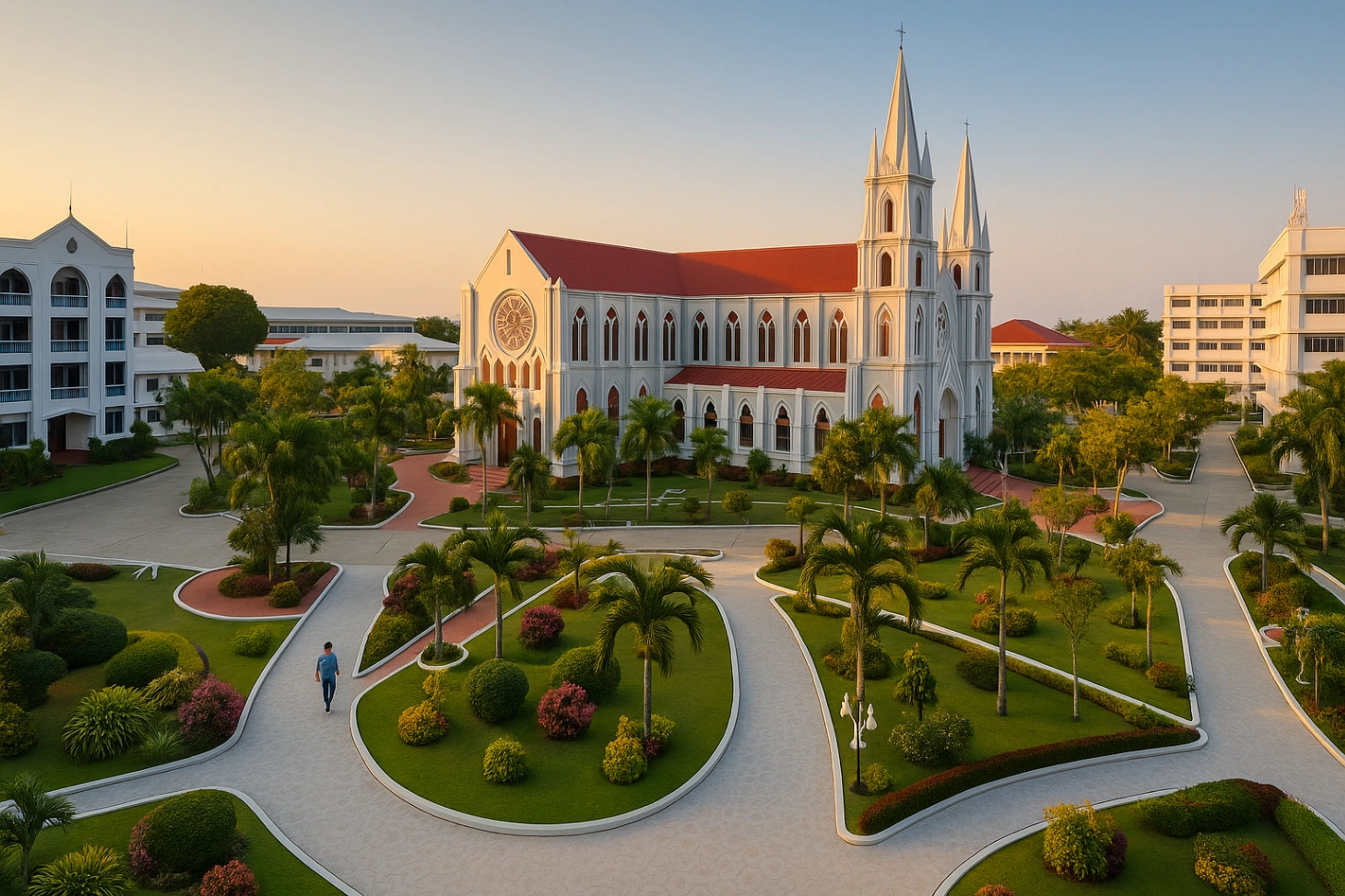St. Paul University, Philippines: Admission, Courses, Fees
Benguet, Philippines • Private
St Paul University Philippines
Overview
St. Paul University Philippines is one of the popular private study abroad medical universities in Philippines. It was established in 1907. Most of the Indian students always choose this country to study in Philippines MBBS. This college serves basic, professional and graduate teaching in various courses. It is a catholic research and higher educational college. The yearly tuition fee for MBBS is $4500. The admission process is done online.
St. Paul University Philippines: Quick Highlights
Given below is the table for quick facts about St. Paul University Philippines:
Particular | Statistics |
Intake for MBBS Course | July |
Processing Time for MBBS Admission | 45-60 days |
Location | Tuguegarao, Philippines |
Eligibility Criteria | 70% in PCB |
NEET Entrance Test | Yes, Required |
Annual Tuition Fees (approx) | USD 4500 |
Annual Hostel Fees (approx) | USD 1100 |
Duration of MBBS Course | 6 years (with internship) |
Medium of Teaching | English |
University Ranking | Country Rank - 121 |
University Recognition | NMC, WHO |
Official Website |
Why Study MBBS at St. Paul University Philippines?
Below are some of the benefits of studying at St.Paul University Philippines that will make you realize how your decision of studying at this university is correct, some of them are:
- The St. Paul University Philippines is dedicated to research as a means to attain excellence and quality in the delivery of its educational services.
- The university has an inclusive and welcoming campus that the students will not face any difficulty in adjusting.
- The university has also deployed collaborations with the international community to engage globally by way of student exchange programs, research and publication activities, strategic partnerships, and other academic service learning projects and special programs.
- The university has a huge extensively maintained library well stocked with latest books and publications in the field of medical science.
- The campus of this university has all the premium world class facilities, like laboratories and classrooms to equip the graduates with the necessary competencies needed to compete in the national and global arena.
- Other facilities include Canteens and cafeterias, with snacks, meals, and school supplies, free medical and dental check-ups.
St Paul University Philippines: Ranking
According to 4icu.org, the following is the country & world ranking for St.Paul University Philippines:
Country | World |
121 | 10490 |
St Paul University Philippines: Accreditation and Recognition
St.Paul University Philippines is recognized and accredited by many important medical bodies in the field of medical education such as:
- World Health Organization (WHO)
- National Medical Commission(NMC)
- Medical Board California
- General Medical Council – UK
- Commission on Higher Education, Philippines
St. Paul University Philippines: Course Duration
Course | Duration |
MBBS | 6 Years |
BS | 2 Years |
MD | 4 years |
St. Paul University Philippines: Medium of Teaching
The medium of instruction at St. Paul University Philippines is English:
- At St.Paul University, the medium of teaching is English.
- As the Philippines is English English-speaking country, the medium of education is English. So it would be easy for all local as well as international students.
St Paul University Philippines
Fee structure
The St. Paul University Philippines tuition fee for the BS program is $ 7985. The tuition fee for the Year 1 is $4500. $4500 is the tuition fee for the year 2.
Years | Tuition Fees in USD | Hostel Fees in USD |
Pre-Medicine 18 months (BS program) | 7985 | 1100 |
Year 1- MD Program | 4500 | 1100 |
Year 2 - MD Program | 4500 | 1100 |
Year 3 - MD Program | 4500 | 1100 |
Year 4 - MD Program | 4500 | 1100 |
MBBS
St Paul University Philippines
Admission Process
St. Paul University Philippines admission process involves filling out an application form, submitting required documents and undergoing a review method. The university may also require a provisional admission letter and visa invitation.
St. Paul University Philippines: Eligibility Criteria
The students seeking St. Paul University Philippines admission should keep in mind the following points before applying:
- Students must be 17 years or above before December of the applying year.
- Indian students should secure 85% scores in class 12 for CBSE board with Biology, Chemistry and Physics.
- Students from ICSC board should have obtain 75% scores in class 12 with biology, chemistry and physics.
St. Paul University Philippines: Documents Required
St. Paul University Philippines are required documents are as followed:
- Application form
- Enrollment form
- Marksheet of class 10 and 12
- Certificate and mark sheet of graduation degree
- Medical examination report
- Passport size photographs
- Language proficiency certificate
- Statement of purpose
- No criminal certificate
- NEET mark sheet
St Paul University Philippines
Hostel
St. Paul University Philippines hostel fee is 1100 USD per year.
Hostel Fee | Annual Fee in USD |
Hostel Fee per annum | 1100 |
Top Recruiters
St Paul University Philippines
FMGE Report
In 2022, the passing rate was 62.50% in the St. Paul University Philippines. The passing rate was 25% in 2023.
Year | Passing Rate |
2022 | 62.50% |
2023 | 25% |
St Paul University Philippines
Faculty
St Paul University Philippines
Infrastructure
St. Paul University Philippines serves infrastructures to its students.
- Auditorium
- Smart Classrooms
- Campus accommodation
- IT Infrastructure
- Laboratories
- Canteen
- Boys and Girls Hostel
- Wi-fi Facility
- Library
- Sports ground



